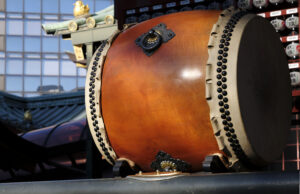In the kaleidoscopic world of music, Japan’s pop scene, popularly known as J-Pop, stands out with its unique blend of innovation, tradition, and theatricality. J-Pop, an abbreviation of Japanese pop, transcends mere music genres to incorporate a vast cultural phenomenon that includes fashion, technology, and an idol culture unlike any other. From its roots in traditional Enka to its contemporary electronic beats, J-Pop encapsulates the heart and soul of Japan’s dynamic cultural landscape. This article delves into the multifaceted universe of J-Pop, decoding key terms and concepts that define Japan’s influential music scene.
1. Unveiling J-Pop: An Introductory Overview
J-Pop, a term coined in the 1990s, encompasses a wide range of musical styles, including pop, rock, dance, and hip-hop. Its origins can be traced back to the 1960s, with the emergence of the Beatles-inspired "Group Sounds." Over the decades, J-Pop has evolved, absorbing influences from Western pop culture while maintaining a distinctly Japanese flavor. Today, J-Pop is a global phenomenon, with artists and groups enjoying international fandoms. The genre’s appeal lies in its catchy melodies, high production values, and visually stunning music videos. J-Pop is not just music; it’s a gateway to understanding contemporary Japanese culture.
2. The Roots of J-Pop: From Enka to Electric
The lineage of J-Pop is a tapestry of musical evolution. Enka, a popular Japanese music genre post-World War II, is often considered the soulful predecessor to J-Pop. Characterized by its melodramatic ballads and traditional Japanese scales, Enka laid the groundwork for emotional expression in Japanese music. The 1970s and 1980s saw a shift towards more electric sounds, influenced by the global disco and rock scenes. Bands like Yellow Magic Orchestra pioneered electronic music in Japan, setting the stage for J-Pop’s eclectic soundscapes. This era marked the beginning of J-Pop’s journey from national favorite to international sensation.
3. Idol Culture: The Heartbeat of J-Pop
Idol culture is arguably the most defining aspect of J-Pop. "Idols" are young performers, meticulously trained and managed by agencies to sing, dance, and charm their way into the hearts of fans. This phenomenon started in the 1970s, with the formation of boy bands and girl groups that were marketed not just for their musical talents but for their personalities and idealized images. Today, idol groups like AKB48 and Arashi have taken the concept to new heights, with massive fan followings and cross-media presence. Idol culture extends beyond music, influencing fashion, television, and even politics, making it a pivotal part of J-Pop’s identity.
4. Visual Kei: J-Pop’s Theatrical Flamboyance
Visual Kei is a subgenre of J-Pop characterized by its performers’ elaborate, often androgynous, costumes, and theatrical makeup. Emerging in the 1980s with bands like X Japan, Visual Kei combines heavy metal, punk, and other music genres with dramatic visual presentations. The performers’ unique looks and dynamic stage presence act as an extension of the music itself, creating a total art form that challenges conventional notions of gender and performance. Visual Kei has a dedicated global following, showcasing J-Pop’s ability to innovate and captivate.
5. J-Rock vs. J-Pop: Understanding the Divide
While J-Pop encompasses a broad range of pop-oriented music, J-Rock focuses specifically on Japanese rock. The two genres, though distinct, often overlap in terms of fan base and musical elements. J-Rock bands like ONE OK ROCK and B’z bring a rawer, edgier sound to the table, often incorporating influences from punk, alternative, and heavy metal. Unlike J-Pop, which is known for its polished aesthetics and catchy melodies, J-Rock tends to prioritize musicianship and lyrical depth. Despite their differences, both genres contribute to Japan’s rich musical tapestry, offering something for every listener.
6. City Pop Revival: Nostalgia Meets Modernity
City Pop, a genre that thrived in the 1980s Japanese urban landscape, has experienced a global revival thanks to the internet. Characterized by its smooth, groovy soundscapes that capture the essence of metropolitan life in Japan, City Pop faded into obscurity before being rediscovered by a new generation of listeners. Artists like Tatsuro Yamashita and Mariya Takeuchi have found renewed popularity, with tracks like "Plastic Love" becoming viral hits. The revival of City Pop signifies a yearning for the sophisticated, cosmopolitan vibe of 1980s Japan, blending nostalgia with modern digital culture.
7. Anime Tunes: J-Pop’s Global Ambassadors
Anime, Japan’s animated film and TV industry, has played a significant role in popularizing J-Pop worldwide. Theme songs and soundtracks performed by J-Pop artists often become as iconic as the anime themselves, serving as a gateway for international audiences into the wider world of J-Pop. Hits like "A Cruel Angel’s Thesis" from "Neon Genesis Evangelion" and LiSA’s "Gurenge" from "Demon Slayer" have transcended their original contexts to become global anthems. Anime tunes showcase the symbiotic relationship between Japan’s music and animation sectors, propelling J-Pop onto the global stage.
8. The Shibuya-kei Scene: J-Pop’s Eclectic Edge
In the 1990s, Shibuya-kei emerged from Tokyo’s Shibuya district as a genre that blended pop, jazz, and electronic music with a distinctively Japanese touch. Artists like Cornelius and Pizzicato Five epitomized Shibuya-kei’s eclectic, sophisticated sound, which drew on a wide range of international influences while remaining quintessentially Japanese. Though its popularity peaked in the late ’90s, Shibuya-kei’s influence persists in the experimental edges of J-Pop, where artists continue to mix genres and cultures in innovative ways.
9. Johnny’s Entertainment: Shaping the Idol World
Johnny’s Entertainment is a powerhouse talent agency that has dominated Japan’s idol scene since the 1960s. Founded by Johnny Kitagawa, the agency has produced some of J-Pop’s most successful boy bands, including SMAP, Arashi, and Hey! Say! JUMP. Johnny’s Entertainment is known for its tight control over its talents’ public images and media appearances, contributing to the mystique and allure of its idols. The agency’s success formula includes combining music with television, theater, and endorsements, making its idols omnipresent in Japanese pop culture.
10. Female Powerhouses in J-Pop Music
Women have played a pivotal role in defining and shaping the J-Pop landscape. Artists like Utada Hikaru, Namie Amuro, and Ayumi Hamasaki have become icons, known for their powerful vocals, relatable lyrics, and distinctive styles. These female powerhouses have broken sales records and pushed the boundaries of J-Pop, exploring themes of love, identity, and societal pressures. Their influence extends beyond music, as they inspire fashion trends and represent modern Japanese femininity.
11. The Influence of K-Pop on the J-Pop Scene
In recent years, the Korean pop music industry, or K-Pop, has made significant inroads into Japan, influencing J-Pop in terms of musical style, production quality, and marketing strategies. K-Pop groups like BTS and TWICE enjoy massive popularity in Japan, leading to collaborations and cross-cultural exchanges between the two pop music powerhouses. This influence has sparked a new wave of J-Pop artists who blend K-Pop’s high-energy performance style with traditional J-Pop sensibilities, creating a fresh, hybrid sound.
12. The Future of J-Pop: Trends and Predictions
As we look to the future, J-Pop is poised for further evolution. The rise of digital media and global streaming platforms has democratized music production and distribution, allowing independent artists and smaller labels to gain visibility. Virtual idols and holographic concerts represent the cutting edge of technology’s intersection with music. Additionally, the ongoing fusion of J-Pop with other music genres and international styles promises to keep the genre vibrant and dynamic. With its ability to continuously innovate and adapt, J-Pop’s influence on the global music scene is set to grow, captivating new audiences and shaping trends for years to come.
J-Pop, with its rich history, diverse genres, and cultural significance, is more than just a musical movement; it’s a vibrant expression of Japanese creativity and global influence. From the theatrics of Visual Kei to the nostalgic waves of City Pop, and the global reach of anime tunes, J-Pop encompasses a universe of sounds and styles, each contributing to the tapestry of Japan’s pop culture. As it evolves, J-Pop continues to challenge and redefine the boundaries of music, fashion, and entertainment, reflecting the changing tastes and values of its global audience. Understanding the key terms and concepts of J-Pop is not just about decoding a music genre; it’s about tuning into the heartbeat of contemporary Japan.






